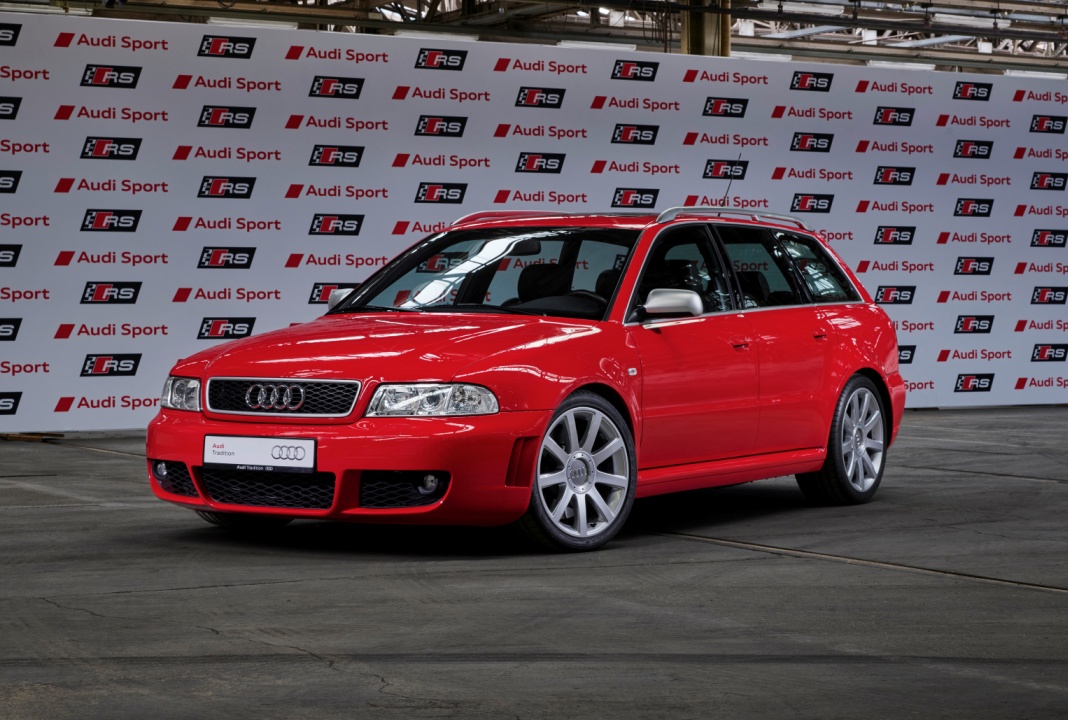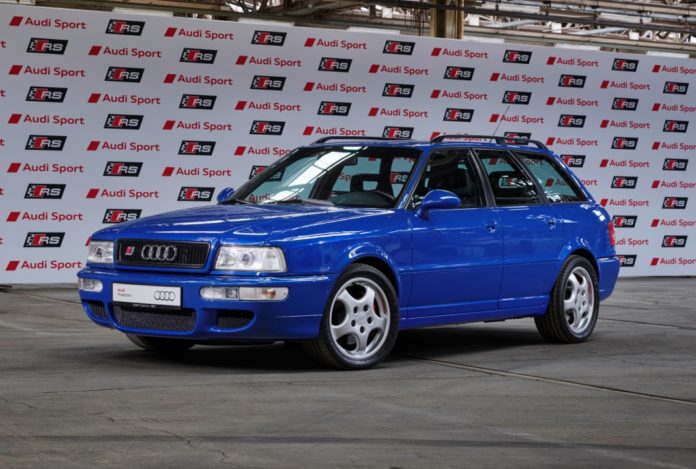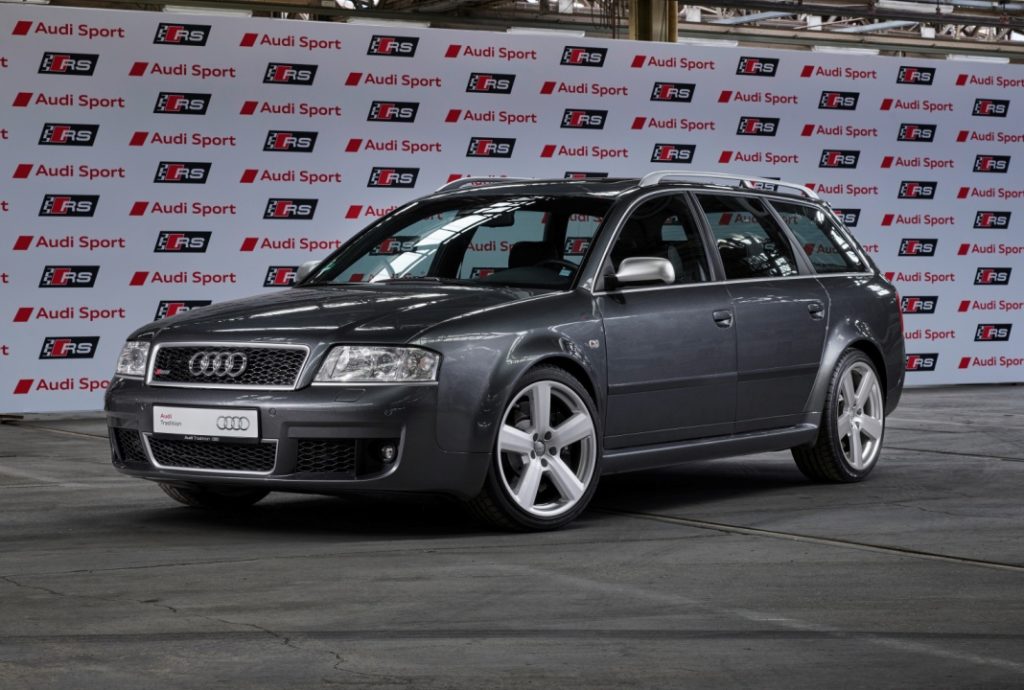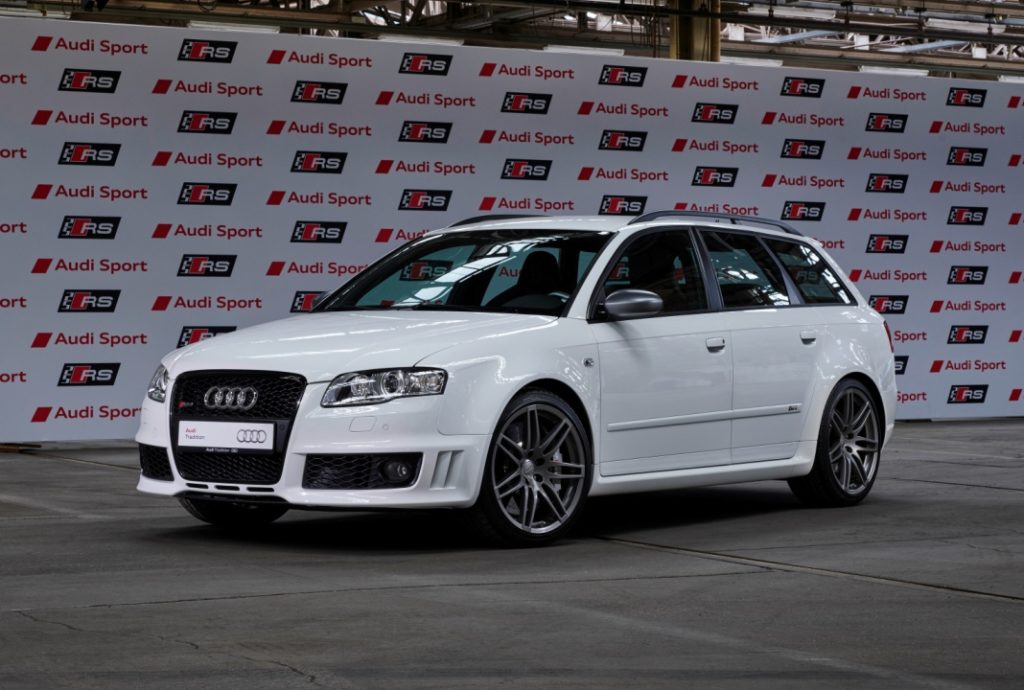Press Release
High-Performance. Full of Character. Individual. Audi Sport Is Celebrating 25 years of the Audi RS Models
- Since their launch back in 1994, 25 RS models have been added to the product range
- Six product innovations, of which two are completely new models, in 2019 alone
- Basic philosophy: performance, prestige and exclusiveness with full everyday practicality
Ingolstadt/Neckarsulm, July 15, 2019 – 25 years ago, the first Audi RS model was launched on the market in the form of the Audi RS 2 Avant, marking the beginning of a success story. With their proximity to motor racing and their exclusiveness, the Audi RS models have always held a particular fascination. To date, Audi Sport GmbH, formerly quattro GmbH, has presented a total of 25 RS models. In 2019, six further product innovations are being presented, of which two are completely new RS models.
At Audi, the designation “RS” stands for a philosophy that is driven by a quest for top performance and perfection. “Every RS model expresses the passion that we put into developing our high-performance cars,” said Oliver Hoffmann, Managing Director of Audi Sport GmbH. “For 25 years, our customers have been experiencing the RS models as masterful companions for everyday life that convey pure emotion and maximum driving enjoyment.”
The RS models are the spearheads of their respective product lines. They stand for performance, prestige and exclusiveness at the limit of what is technically feasible without any loss of everyday usability. Many of them are pioneers in their market segments and trailblazers for technical innovations – that applied to the Audi RS 4 Avant with its barnstorming biturbo V6 19 years ago and it applies just as much to the TT RS and its multi-award-winning, forceful five cylinder in its latest evolutionary stage.
 RS 2 Avant to RS 4: Dynamism rooted in tradition
RS 2 Avant to RS 4: Dynamism rooted in tradition
The RS models have been making a splash for a quarter of a century – five milestones merit particular mention.
In 1994, the Audi RS 2 Avant with its four-valve, five-cylinder engine, long since in use, wrote the first chapter of the RS story. With this car, the company established the segment of the dynamic high-performance station wagons. The quattro drive with its self-locking center differential that had proven itself in motor racing and rallying made it possible to masterfully transfer this high performance to the road.
In 1999, the Audi RS 4 Avant based on the S4 of the time introduced a new dimension in terms of power to the medium-size class. Under the hood, a V6 engine with displacement of 2.7 liters, five valves per cylinder and biturbo charging does all the work – just like in the S4. The engineers at what was then quattro GmbH developed the power unit, which was already very powerful, to give it even more vibrancy and even higher torque for use in the RS 4. In collaboration with Cosworth Technology, the cylinder head was newly developed, the intake and exhaust ports were revised and the cross section of the air ducts were enlarged on the suction and compression sides. Furthermore, the turbochargers are larger and the boost pressure is increased compared with the S4. As a result, the RS 4 engine develops maximum power of 280 kW (380 metric horsepower) instead of 195 kW (265 metric horsepower).
 The current RS models: powerful, exclusive and composed
The current RS models: powerful, exclusive and composed
The RS models have extraordinary turbo engines under the hood, with the inexorable five-cylinder that has a strong tradition with the four rings leading the way. During the 1980s, they powered the Audi rally cars, touring cars and production models to the front of the pack. The first RS model, the RS 2 from 1994, also had such an engine. The five-cylinder made its comeback in 2009 in the Audi TT RS; it made its way into the RS 3 Sportback in 2011 and two years later into the RS Q3. Today the 2.5 TFSI runs not only in the TT RS, but also in the RS 3. Following its revision, the five-cylinder is 26 kilograms lighter than the previous version. Its crankcase is made of aluminum, which alone saves 18 kg. Elaborate measures reduce internal friction while at the same time increasing power output. The cylinder barrels are plasma-coated; the crankshaft main bearings are six millimeters smaller in diameter. The crankshaft is hollow bored and is therefore 1 kg lighter, while the aluminum pistons have integrated channels for oil cooling. In the short warm-up phase after a cold start, the switchable water pump does not circulate the coolant in the cylinder head – the 2.5 TFSI engine thus reaches its operating temperature more quickly. This lowers the coefficient of friction and reduces fuel consumption. The ignition sequence 1-2-4-5-3, supported by the geometry of the intake and exhaust system, provides the unmistakeable engine sound that made Audi popular back in the 1980s.
The innovative Dynamic Ride Control damper control system is also exclusive for the models with a longitudinally installed engine – a pioneering innovation that was first used in 2002 in the RS 6. This integrated roll and pitch stabilizer consists of a special damper system that counteracts the movements of the vehicle body with no delay without the use of electronics. When the vehicle is turning into and traveling round a bend, the damper response is altered so that the vehicle’s movements about the longitudinal axis (roll) and about the transverse axis (pitch) are significantly reduced. The dampers on one side of the vehicle are connected to the dampers diagonally opposite to them via two separate oil lines, each of which has a central valve. The valves mounted close to the rear axle provide the necessary compensating volume via internal pistons with the gas-filled compartment behind them. When the vehicle is steering into and traveling round a bend, an oil flow is generated between the diagonally opposite dampers via the central valve, thus creating additional damping force. When one side is cushioned, the damping characteristics are altered such that roll and pitch movements are eliminated almost entirely. As a result, this highly responsive damper system ensures that the RS models have particularly good track stability when negotiating bends.
The RS sport suspension available in the current RS 4 Avant and RS 5 Coupé and Sportback, which features Dynamic Ride Control (DRC), has a three-stage variable damper response. With the aid of Audi drive select, the driver can influence the damper response and thereby personalize the driving experience. The new generation of dampers with integrated valve is more compact and lighter. In addition, it enables the damping forces to be spread even more widely between the comfort and dynamic modes as well as more precise suspension adjustment for high damping forces, which occur when cornering at speed in particular. The result: In the comfort mode, the RS sport suspension with Dynamic Ride Control (DRC) ensures amazing ride comfort. In the dynamic program, it delivers extraordinary driving precision even when cornering at high speed.































Recent Comments